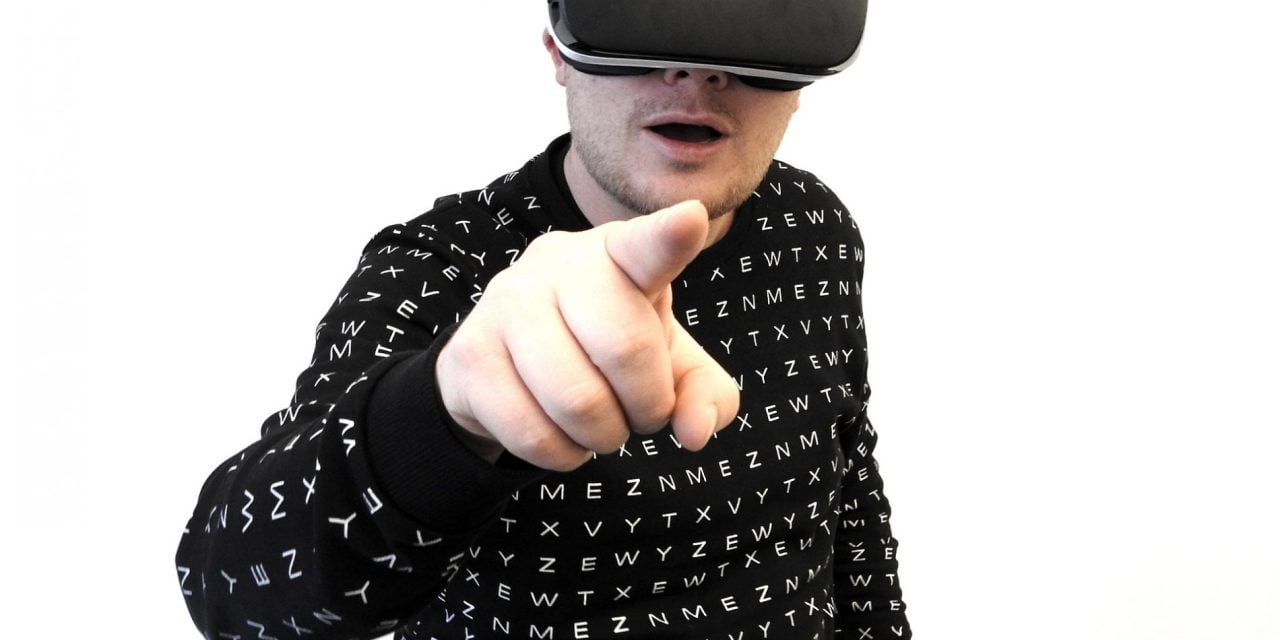In an era where robots monitor shopping malls, drones flock the skies and mini-supercomputers are held in nearly every pocket, it was only a matter of time before futuristic technology infiltrated the real estate sales and leasing industry.
Virtual reality is the latest development in digital home viewing. This is all an upgrade from the TV real estate channels and videos of old, which presented listings through a filmed walk-through of a property with an audio script. Some advocates of virtual reality swear it will replace open houses altogether, theoretically maximizing the agents’ role marketing a home in the future. In fact, Goldman Sachs estimates virtual reality in real estate will become a multi-billion-dollar industry by 2025.
Virtual reality technology in the context of real estate manifests in several ways:
- digital renderings of floorplans navigable through computer interfaces;
- large projections of virtual floorplans onto walls so the viewer can imagine walking the property; and
- virtual home tours through three-dimensional renderings visible by wearable headsets.
Regardless of the particulars, the endgame is the same: sell real estate without the prospective buyer ever physically visiting the property.
Virtual reality programs allow homebuyers to “walk” properties without expending time and money traveling from site to site and viewing homes they may not even like. Instead, buyers can begin at home by using virtual tours to narrow down long lists of properties to their top selections, to be later visited in person only after vetting them. This benefit multiplies for out-of-state and international buyers, whose travel expenses are significantly reduced thanks to their ability to virtually view properties. The same situation exists for commercial tenants seeking out suitable space.
Further, virtual reality provides builders with the ability to allow prospective buyers to “visit” properties before they even exist — think presales of a subdivision or condo project. New developments which have not yet broken ground on construction can be digitally built for the buyer’s eye. Thus, the builder increases the likelihood a buyer will gain a visceral understanding of a property’s attributes and jump on a purchase before it actually hits the open market (or is even constructed).
https://www.youtube.com/watch?v=5ozKV5DFIwE
Demo video courtesy of Virtual Xperience, LLC.
See the future — for a price
In order for virtual home viewings to become commonplace and easily accessible to the average homebuyer, investments need to be made in the proper technology. A virtual reality headset alone does not suffice; users also need compatible computer/console systems and streaming power to make the experience anything other than a nauseating trip through a land of pixels and polygons.
Although rudimentary headsets can come as cheap as $99, full-powered systems and the up to spec software needed to run them can cost up to a few thousand dollars. Thus, it will be numerous years before virtual reality is embraced by the mass market.
Then there’s the matter of paying for a designer to render the digital approximation of the home for a buyer. For example, virtual reality startup Virtual Xperience estimates a cost of $399-799 for the digital design of a one-bedroom apartment at 750 square feet in New York City available for occupancy by a buyer.
Although this cost may exceed individual homebuyers’ budgets, larger real estate brokerages who cater to wealthy, tech-savvy clients with money to burn may willingly pay for the trendy technology that puts them ahead of the pack. A brokerage offering their buyer clients the ability to trim a dense list of qualifying homes for a suitable one without leaving the office has the advantage over smaller brokerages with limited resources.
Editor’s note — A skilled and intuitive agent can orchestrate an efficient physical tour of qualifying properties by cultivating a list of available properties according to a client’s desired attributes.
Virtual reality to replace agents?
Some real estate professionals fear virtual reality technology will make their services obsolete. However, real estate, regardless of its type, is a touchy-feely business. The expanse of an agent’s services surpasses mere guided tours through homes for sale. Agents intuitively locate qualifying properties for their buyer, negotiate prices and contract conditions on their client’s behalf, demand mandatory seller disclosures and cut through dry and excessive contractual language to walk clients through the home buying process. Most of all, they are advocates for their clients’ best interests throughout what may otherwise be a harrowing financial (and emotional) trial.
Additionally, most buyers will likely use virtual reality as a preemptive process of elimination. The virtual tour is essentially the hors d’oeuvre before the entrée — a physical viewing of the property with their knowledgeable and perceptive agent. When means allow, buyers will still want to actually see their final selections for themselves, ultimately relying on agents’ insight and advice when it comes time to put pen to paper, or its digital equivalent.














